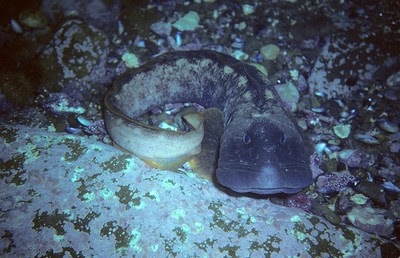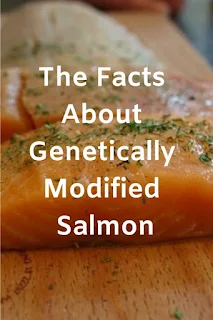It was bound to happen sooner or later. We have genetically modified plant food and soon we might have genetically modified salmon to eat. There are several health risks and risks to ocean life now that this "frankenfood" has been approved. What exactly is genetically modified salmon?
On November 19, 2015, the FDA has given approval for this genetically altered salmon for human consumption.
The AquaBounty Technology Company under the AquAdvantage label filed an application that would allow these salmon that are grown from genetically modified or genetically engineered salmon eggs to be used as food.
Now that the FDA has approved these genetically modified salmon, they become the first genetically modified animal food approved for human consumption. Now that they have been approved, they are awaiting labeling guidelines from the FDA. The genetically modified salmon are expected to be sold in the United States by summer 2019.
What is Genetically Modified Salmon
It is the salmon eggs that are genetically modified, combining genetic traits or actually genes from one species into the other species.
The genetically engineered salmon will grow to a marketable size in half of the time that it would take a normal salmon to grow.
They have combined the growth hormone from the Pacific Chinook salmon which will cause the Atlantic salmon to grow faster and also use genes from a fish called the pout fish or eelpout (Zoarces americanus) which is an eel-like fish that has what are called antifreeze proteins that allow the pout fish to survive in near-freezing waters and grows in summer and winter.
The hormone from the pout fish keeps the Atlantic salmon growth hormone turned on all of the time, so the new genetically modified Atlantic salmon would then be able to grow faster.
The eel pout fish are found in the western Atlantic Ocean off of the coast of New England and Newfoundland and has a tolerance for very cold water temperatures. It has to do with the way the hormones from the Chinook salmon and the pout fish work with the Atlantic salmon.
One important point that AquaBounty technology states in order to get FDA approval are that these genetically modified eggs will be sterile so that the altered salmon cannot reproduce and get into the natural salmon population.
The FDA has found that 5% of these genetically modified eggs are fertile and can reproduce. These genetically modified salmon will be grown only in enclosed fish farms.
 |
| Ocean Pout /Derek Keats Flickr CC BY 2.0 |
Arguments For Genetically Modified Salmon
It seems the biggest advantage to the salmon would be that they grow to full size in half the time of a normal salmon increasing the food supply of salmon. Certainly a major reason of course is higher profits, larger and rapidly growing Atlantic salmon would certainly mean more profits.
Arguments Against Genetically Modified Salmon
The main concern is that these modified fish could escape into the wild and endanger or even cause the extinction of the wild salmon. If the genetically modified salmon were to escape into the oceans, they could be a threat to wild salmon.
They would compete for food and could breed with the wild salmon. Once escaped, it is possibly that they could never be fully contained.
In November, 2020, U.S. District Court Judge Vince Chhabria, ruled that the U.S. Food and Drug Administration (FDA) violated core environmental laws when it approved AquaBounty’s modified salmon. [1]
This ruling did not vacate the FDA’s approval of the salmon for human consumption. The Judge did order the FDA to conduct an environmental assessment of the genetically modified salmon.
November 2015 Update
In November of 2015, the Food and Drug Administration has given approval for the sale and human consumption of this genetically altered salmon, but not in the United States. Alaska Senator Lisa Murkowski filed an appropriations bill rider that blocked the FDA from introducing the salmon into the United States market until the government published labeling guidelines.
Current FDA law states that genetically modified food does not have to be labeled as such unless the modified food is substantially different than the original food or a known allergen exists such as peanuts. Current FDA thinking is that this genetically modified salmon is basically the same food as the normal salmon.
2019 Update - Approved for Sale in the United States
In March of 2019, the FDA has approved the sale of the genetically modified salmon grown by The AquaBounty Technology Company.
The company's one U.S. hatchery is located in Indiana and expects to harvest the first genetically modified salmon by September 2020. At first, their products will be sold to U.S. restaurants and food-service channels before it ends up in supermarkets.
Which of course raises an important question. Will these salmon also be labeled on restaurant menus as genetically modified.
Conclusion
It is also reported that there is now a long line of genetically modified foods ready for the approval process now that this genetically modified salmon has been approved.
About the Author
Sam Montana is a certified Food Over Medicine instructor from the Wellness Forum Health Center and certified in optimal nutrition from the Harvard T.H. Chan School of Public Health.
Resources:

